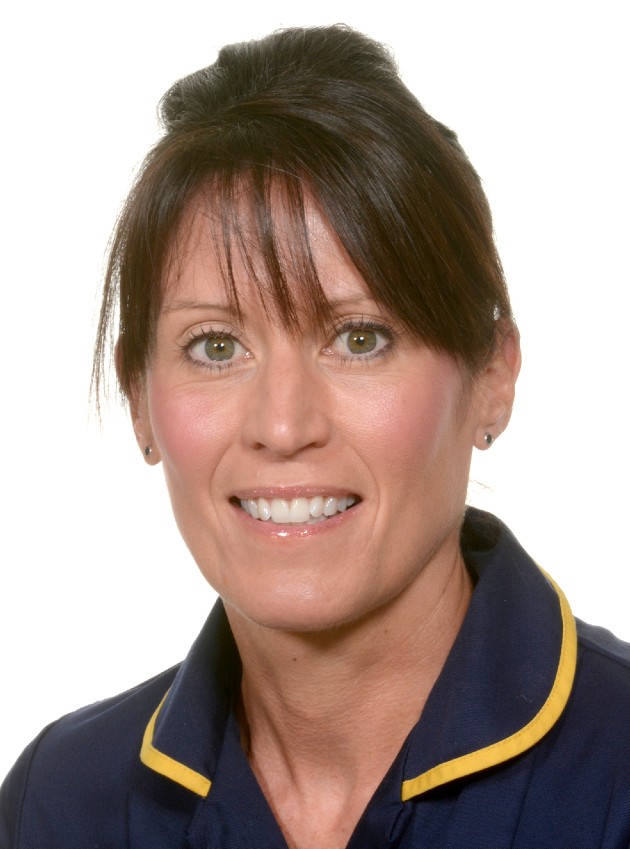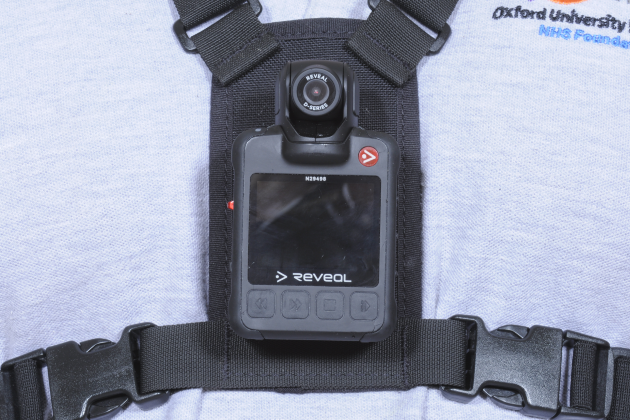When Sam Foster, Chief Nursing Officer at Oxford University Hospitals NHS Foundation Trust (OUH), received an email from a staff member who’d been sexually assaulted in a patient’s home, she knew there was urgent work to be done.
The nurse wanted to know what support there was for someone who’d suffered abuse at work.
“She asked me, what do I do now? Where do I go to get help? What happens next? It made me realise that unfortunately the organisation’s response to abuse – be that sexual, verbal, physical – needed to change.”
As a result, over the last 18 months Sam and her team have been undertaking a complex and in-depth overhaul of health and safety protocols at OUH.
“As an organisation, we’ve been focusing on the wellbeing of our staff. Not only ensuring they’re safe in our buildings, and that we’ve got robust processes around sharps injuries, for example, but also looking at the practice environment, including general wellbeing, stress and tackling violence and aggression.”
The organisation’s response to abuse needed to change
With the restrictions and added pressures of the pandemic causing frustrations to be taken out on frontline staff, the trust has seen a sharp rise in incidences of abuse being reported: from 80 in November 2020 to 180 in November 2021.
What’s more, an anonymous staff survey revealed that incidences were in fact much more frequent than reported. “There has historically been a general reluctance to report, with staff simply accepting abuse as part of their job or feeling as though nothing will be done even if they do report it.”
The health and safety committee started some deep diagnostic work, looking at where, when and why incidences were taking place.
“It’s highly complex, with many different strands involved. But as we began unravelling the information, there were some clear hotspots where poor behaviour was regularly occurring and being normalised,” Sam explains. “We wanted to concentrate efforts first on how we could begin deterring events from taking place and learn more about what’s happening on the ground.”
So when staff in the trust’s two emergency departments suggested piloting bodycams, Sam saw the value immediately.
“Police wear them, paramedics wear them, security staff wear them… so I think it was a natural instinct, especially for our frontline staff who work regularly with these other first responders,” says Sam. “It’s also really important to show we’re listening to our staff and actioning the things they tell us would help them feel safer.”
It’s really important to show we’re listening to our staff
Setting up a pilot
A three-month trial was set up using parameters and learnings from police and paramedic colleagues. Emergency department clinical staff at the John Radcliffe Hospital were involved in the initial pilot and wore a bodycam for each shift.
In the first 24 hours, the cameras were activated three times.
There are no particular criteria for turning them on; the decision to do so is down to the wearer. If they feel an event warrants it or a situation is likely to escalate, then the member of staff will turn on their bodycam and inform the person they’re recording them.
“The bodycam screens face outwards,” Sam explains. “It’s amazing what effect it can have for someone to actually see themselves behaving aggressively on screen.”
The main hope is that the bodycams can act as a deterrent and help de-escalate situations. But where needed, having video evidence to support an incident investigation can also be very useful.
“As the person who signs all the complaint responses, it's really powerful to be able to refer to the video evidence rather than rely on verbal reports,” Sam says.
Learning and improving
Following this pilot, 96% of staff said they thought the cameras were needed.
Following the success here, body cameras have been introduced as permanent fixtures both in this department and in the emergency department at the Trust’s Horton General Hospital.
Another hotspot, for very different reasons, was shown to be the large neurosciences department. Patients here are compromised cognitively; they may have a brain injury or have undergone brain surgery.
The nursing staff in this department recently began trialling the bodycams as a second pilot to provide insight into another area where violence and aggression happen frequently but in different ways and for different reasons.
Both pilots have provided valuable learning.
“Clinically, we learn from experiences. The video footage recorded on the bodycams gives us an opportunity to learn from real-life scenarios in the same way,” says Sam. “We’ll be able to increase our understanding of the common issues and behaviours and hopefully formulate some positive processes and staff training around dealing with these.”
We don’t want staff to accept being abused or assaulted as part of their job
Fostering feelings of safety
And, of course, another aim is to ultimately reduce incidences of abuse and aggression while making staff feel safer and more supported at work.
Sam references a paramedic who was recently stabbed by a patient in the Midlands. Thankfully, she has recovered but the trauma of the experience extends far beyond any physical injury.
“How awful is it to think you might not be safe at work and could be assaulted just trying to do your job?” asks Sam. “We don’t want our staff to accept being abused or assaulted as part of their job.”
The good news is that reports of abusive behaviour at the John Radcliffe Hospital have since dropped by about half – from 180 incidents in November 2021 to 94 in April 2022.
“This bodycam trial is part of a bigger ongoing piece of work around health, safety and wellbeing, but we’re feeling very positive about its impact, and will keep striving to make our staff safer at work.”

RCN advice and guidance
- RCN advice guide on violence in the workplace
- RCN position on work-related violence in health and social care
Words by Leah Williams
Images courtesy of Oxford University Hospitals NHS Foundation Trust








